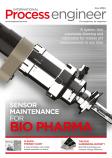Bearing Isolator technology, originally developed by Inpro/Seal in 1977, has been an integral part of increasing the mean time between failure (MTBF) and improving the reliability of a variety of rotating equipment.
The Inpro/Seal Bearing Isolator is a two part dynamic seal consisting of a stator, most commonly press-fitted into the bearing housing, and a rotor attached to the shaft. The rotor and stator join together to form a non-contacting compound labyrinth seal with no wearing parts. It protects in two ways: bearing lubricant is captured in the inner portion of the labyrinth and flows back to the bearing housing; outside contamination attempting to enter the bearing housing is captured in the outer labyrinth paths and expelled through a port in the rotor by centrifugal force and gravity.
The Bearing Isolator was invented to replace lip seals as a sealing solution in industrial process equipment, such as pumps, motors, gearboxes, pillow blocks and other types of rotating equipment. Because of their contacting design, friction against the shaft limits the life span of lip seals to about 3000 hours. Alternatively, an Inpro/Seal Bearing Isolator lacks any wearing parts thereby sealing the bearing for the life of the equipment.
For more information, enter √ at www.engineerlive.com/epe
Inpro/Seal LLC is based in Rock Island, Illinois, USA. www.inpro-seal.com


















